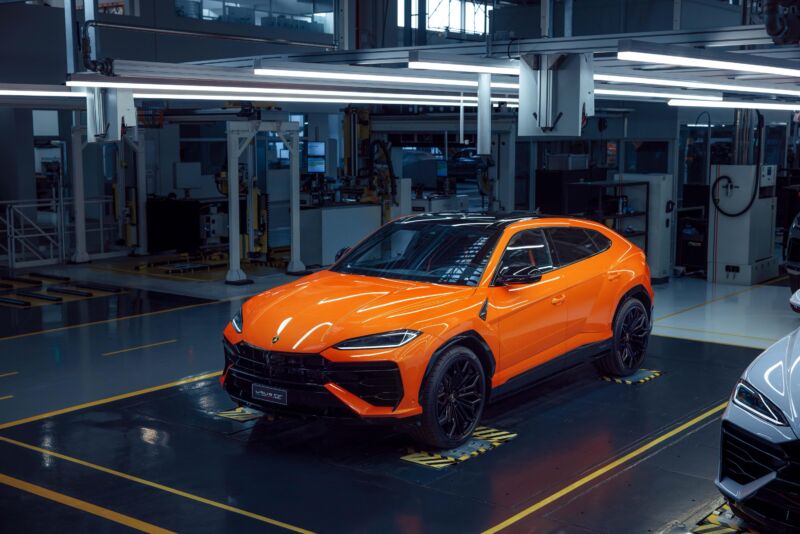Lamborghini’s biggest EV challenge? Not being seen as “fake,” says CTO.

Enlarge / Lamborghini has added a plug-in hybrid powertrain to the Urus SUV. (credit: Lamborghini)
Lamborghini has now launched its second plug-in hybrid. The first was the V-12-powered Revuelto, a $600,000 supercar with 1,001 hp (746 kW), all-wheel drive, and three electric motors, which debuted last year. It can hit 60 mph (98 km/h) in about two seconds and can achieve a top speed of 217 mph (350 km/h). But if we're relying on Lamborghini's hybridization to save the planet from melting, we're burying our heads in oil-soaked sand. True, its newest hybrid, the Urus SE, can travel 37 miles (60 km) on EV power alone, and hybridizing it cuts emissions by 80 percent. Since the non-hybrid Urus V8 gets a combined 16 mpg (14.7 L/100 km), this shouldn't be considered a major triumph.
A far bigger deal would be if brands like Lamborghini could crack the code on passion-making what they already do but with electric vehicles, somehow without sanding away the sex appeal.
Lamborghini has committed to having at least two EVs on the road by 2030, and it has already shown the Lanzador EV concept, a kind of hypercar crossover. But Lamborghini Chief Technology Officer Rouven Mohr, who sat down with us to discuss the Urus SE, says that technically, there's still an issue with EVs retaining the bombast that makes the Italian super sports car brand what it is. Counterintuitively, Mohr argued that AI might enable this next leap.